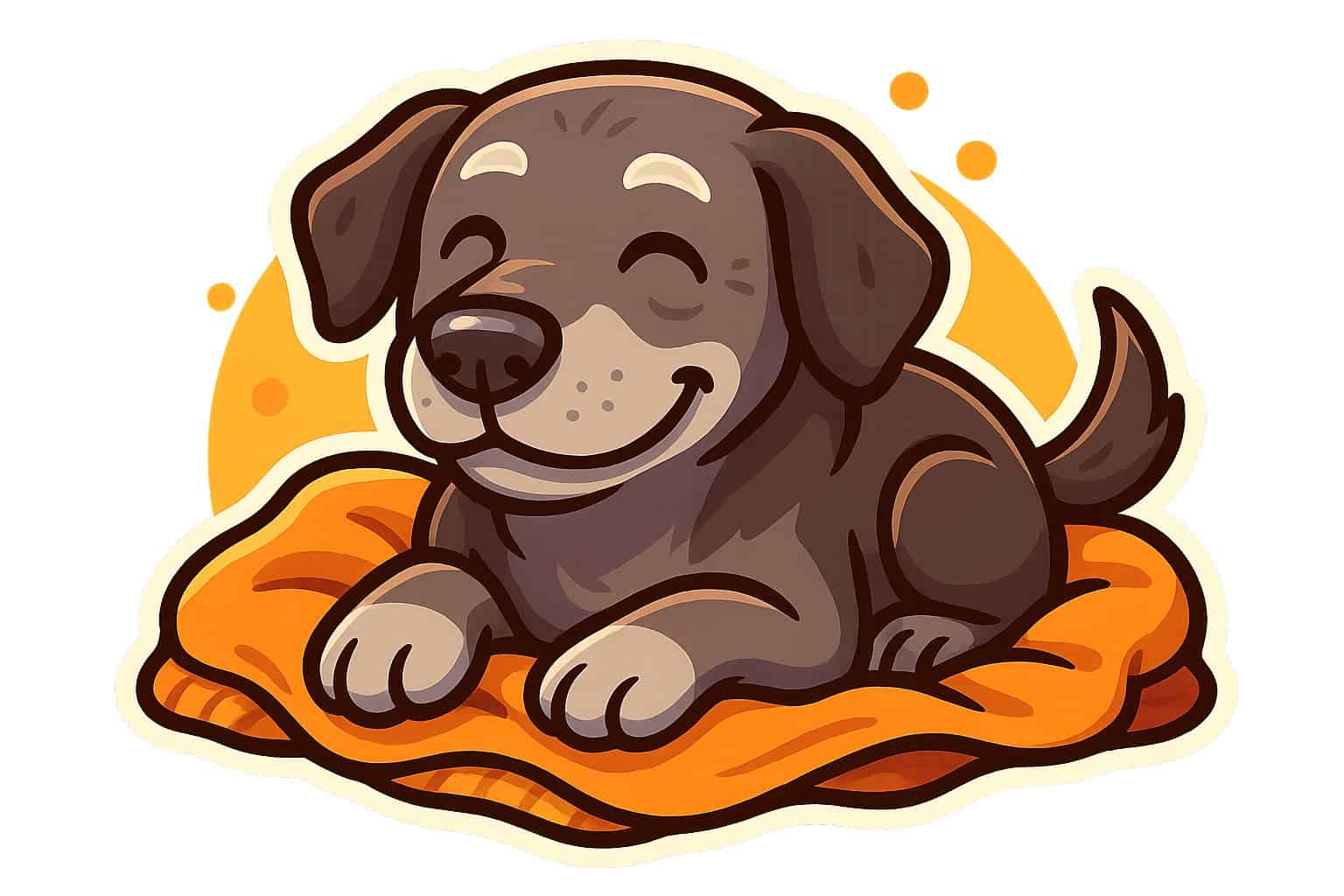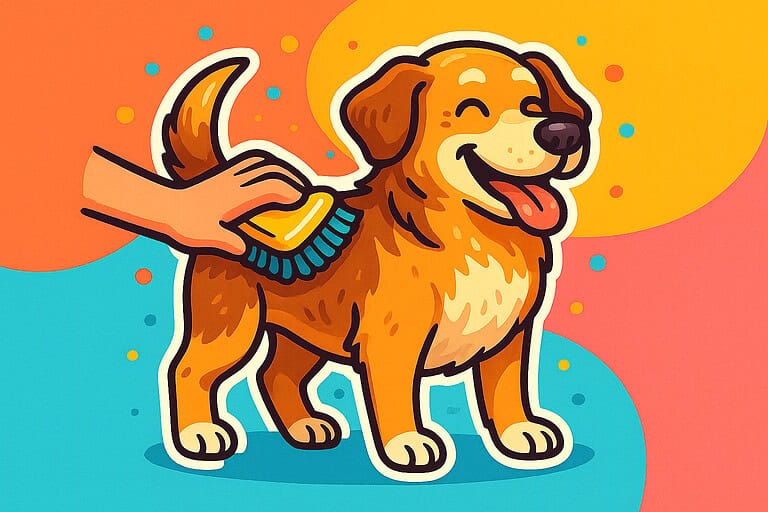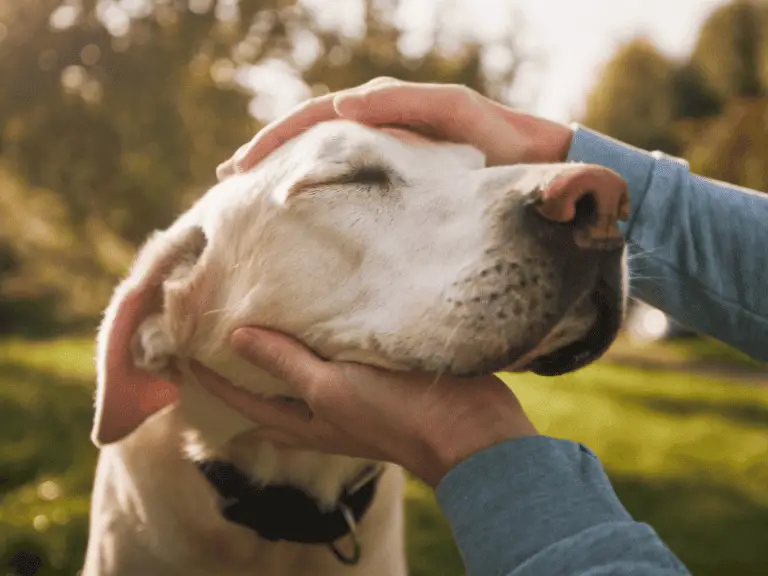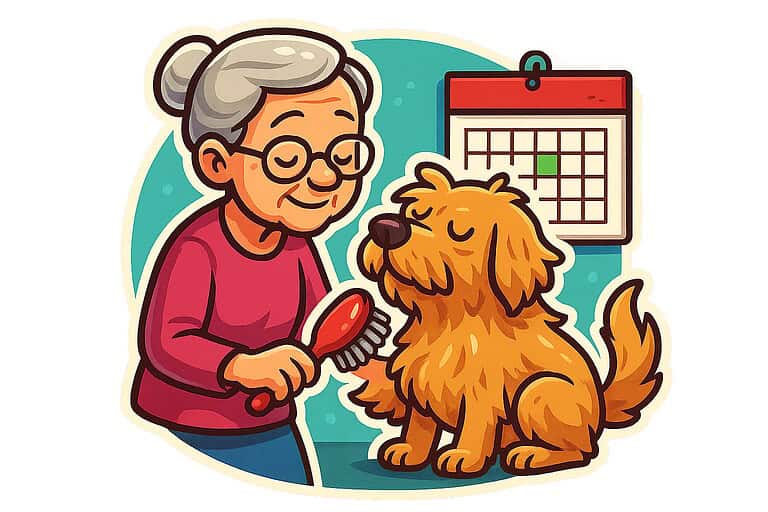10 Signs Your Senior Dog Needs More Security

As your dog enters their golden years, you might notice subtle changes in how they react to the world around them. Maybe your once-confident companion now seems hesitant about new situations.
Perhaps they’ve started seeking out quiet corners more often than usual. These shifts aren’t just signs of getting older, they often point to your senior dog’s growing need for extra security and comfort.
Just like older humans who might feel less steady on their feet or more uncertain in unfamiliar places, senior dogs can experience anxiety and confusion. Physical changes make them crave additional security.
Whether it’s difficulty with balance, changes in how they sleep, or new fears about going outside, understanding these signals helps you give your faithful friend what they need to feel safe and loved.
1) Increased nervousness or anxiety in new or noisy environments
Have you noticed your senior dog getting jumpy around sounds that never bothered them before? Maybe they used to love car rides but now pant and shake the whole way there.
As dogs age, their brains process stress differently than when they were younger. Your dog’s hearing might also be changing.
Sometimes they can’t tell where sounds are coming from anymore, making everyday noises feel scary and unpredictable. New places can feel overwhelming too.
Your senior dog might stick close to your side at the vet’s office or refuse to walk into unfamiliar buildings. If your dog starts trembling during thunderstorms when they used to sleep right through them, that’s a sign they need more security.
The same goes for hiding when guests come over. Watch for panting, drooling, or trying to escape when you’re out and about, these are your dog’s way of saying they feel unsafe.
Creating a calm, predictable routine helps. I recommend bringing a favorite blanket or toy to new places so your dog has something familiar to comfort them.
2) Unsteady walking or frequent stumbling indicating balance issues
Have you noticed your senior dog walking like they’ve had one too many treats? When your older dog starts stumbling or walking unsteadily, it’s their way of telling you something’s not quite right.
Balance problems in senior dogs often look like a wobbly, drunken walk. Your dog might lean to one side, stumble frequently, or even fall over completely.
Sometimes they’ll walk in circles or have trouble standing up. This unsteadiness isn’t just „getting old.“
It could signal vestibular disease, which affects your dog’s inner ear and balance system. Think of it like your dog’s internal compass going haywire.
Maybe you’ve seen your dog trying to navigate stairs they’ve climbed thousands of times before, only to hesitate or miss a step. Or perhaps they’re bumping into furniture in rooms they know by heart.
These balance issues can make your dog feel anxious and insecure. When they can’t trust their own feet, they need extra support and security from you.
Creating a safer environment with non-slip rugs and removing obstacles becomes essential for their confidence and wellbeing.
3) More frequent hiding or seeking out quiet, secluded spots
Have you noticed your senior dog sneaking off to that corner behind the couch more often? This change in behavior is actually quite common as dogs age.
Your older dog might start seeking out quiet spaces because they’re feeling overwhelmed or anxious. Maybe the household noise that never bothered them before now feels too intense.
Physical discomfort often drives this hiding behavior too. When dogs don’t feel well, their instinct is to find a safe, quiet place to rest.
It’s similar to how you might want to curl up in bed when you’re not feeling your best. Your dog might also be experiencing changes in their hearing or vision.
These sensory changes can make them feel less secure in open spaces where they can’t monitor their surroundings as easily. Sometimes, cognitive changes that come with aging make familiar spaces feel confusing or stressful.
Your dog might retreat to smaller, more manageable areas where they feel safer. If your senior dog suddenly starts hiding frequently, don’t ignore this behavior.
While some amount of seeking quiet spots is normal, a dramatic increase could signal that your dog needs more security or even medical attention. Pay attention to when and where your dog chooses to hide.
This information can help you create more comfortable spaces for them.
4) Sudden aggression or irritability when approached unexpectedly
Has your gentle senior dog started snapping when you reach out to pet them? This sudden change in behavior often signals that your older dog feels unsafe or threatened.
When dogs age, their hearing and vision can decline. Your dog might not see or hear you coming anymore.
Imagine how startled you’d feel if someone suddenly appeared next to you without warning! Pain also plays a big role in this behavior.
If your dog has arthritis or sore joints, being touched unexpectedly can hurt. They may snap to protect themselves from what they think will be painful contact.
Cognitive changes can make your senior dog confused about familiar people and situations. Your dog might not recognize you immediately when you approach quickly.
You can help by making noise when you enter a room. Try calling your dog’s name softly or tapping your foot.
This gives them time to realize you’re coming. Move slowly around your senior dog.
Quick movements can seem threatening to an older dog who can’t see or think as clearly as before.
5) Difficulty recognizing familiar people or places, hinting at confusion
Have you noticed your senior dog seeming lost in your own backyard? Maybe they’re staring blankly at family members they’ve known for years.
This confusion can be one of the most heartbreaking signs of cognitive decline in older dogs. Your dog might not recognize you right away when you come home from work.
They could get confused about which door leads outside. Sometimes they’ll stand in corners or walk into rooms and seem surprised to be there.
If your dog suddenly acts nervous around familiar visitors, this might signal memory problems. They may bark at the mailman they’ve seen every day for years.
Getting lost on familiar walking routes is another red flag. Your dog might hesitate at turns they’ve made hundreds of times before.
This confusion creates anxiety for your pet. They feel uncertain about their surroundings, which makes them crave more security and comfort from you.
Watch for moments when your dog seems to „snap back“ to normal after looking confused. These episodes often come and go in the early stages.
6) Reluctance to go outside due to fear or discomfort
Maybe you’ve noticed your senior dog suddenly hesitates at the door or flat-out refuses to go outside. This change can be puzzling, especially if your furry friend used to love outdoor adventures.
Fear often develops in older dogs due to past bad experiences. A loud noise, scary encounter with another dog, or even a fall can create lasting anxiety about going outside.
Physical discomfort plays a big role too. Your dog might associate going outside with pain from arthritis or sore joints.
Walking on hard pavement or uneven ground can hurt aging paws and legs. Weather sensitivity increases with age.
Cold temperatures can make arthritis worse, while hot pavement might burn sensitive paw pads. If your dog suddenly refuses outdoor time, pay attention to their body language.
Are they trembling, panting, or hiding? These signs point to fear or anxiety.
I recommend starting with gentle encouragement rather than forcing them outside. Try shorter trips to familiar, comfortable spots first.
Sometimes bringing along a favorite toy or treat can help build positive associations again. Consider if anything in your environment has changed recently.
New construction noise, different walking routes, or even seasonal changes might be affecting your dog’s comfort level.
7) Changes in sleeping patterns, like restlessness or disorientation at night
Have you noticed your senior dog wandering around the house at 2 AM when they used to sleep soundly? This restless behavior often signals your dog needs more security and comfort.
Aging affects your dog’s sleep cycles just like it does for humans. Your once-peaceful sleeper might now pace the hallways or seem confused about where they are.
Maybe you’ve found your dog staring into corners or walking into walls during nighttime hours. This disorientation can be frightening for them, making familiar spaces feel strange and unsafe.
Your dog might also flip their sleep schedule completely. They could sleep more during the day but stay awake and anxious at night when the house is quiet.
If your dog suddenly starts sleeping in different rooms or seeks isolated spots, they’re likely feeling vulnerable. They’re looking for a place that feels more secure.
Consider moving their bed closer to yours or providing a nightlight to help them navigate better. Should you notice these sleep changes appearing suddenly, it’s worth checking with your vet to rule out any health issues.
8) Loss of interest in toys or activities they once loved
Maybe you’ve noticed your senior dog walking past their favorite squeaky toy without a second glance. Or perhaps they no longer get excited about that daily game of fetch in the backyard.
This change can feel heartbreaking. Your once playful companion now seems indifferent to activities that used to make their tail wag with joy.
Physical discomfort from arthritis might make playing painful. Their energy levels naturally decrease with age, making vigorous activities feel overwhelming.
Sometimes it’s simply boredom. Your dog might need new types of stimulation that match their current abilities and interests.
Health issues can also play a role. If your dog suddenly loses interest in everything they once enjoyed, it’s worth checking with your vet to rule out underlying problems.
You can help by offering gentler activities and creating cozy, comfortable spaces where they feel safe. Sometimes switching to puzzle toys or shorter, less intense play sessions can reignite their interest in having fun.
9) Excessive barking or whining without obvious cause
Have you noticed your senior dog barking or whining more often, even when nothing seems to be happening? This sudden change in behavior often signals that your furry friend needs more security in their daily life.
As dogs age, they can develop what’s called senile barking. Unlike normal barking at the mailman or doorbell, this type of vocalization happens without any clear trigger.
Your dog might be experiencing hearing or vision loss, which makes their world feel uncertain. When they can’t see or hear as well, everyday situations become confusing and scary.
Pain is another common culprit. If your dog is hurting but can’t tell you where, they might bark or whine to express their discomfort.
Cognitive changes, similar to dementia in humans, can also cause excessive vocalization. Your dog might feel lost or anxious, even in familiar surroundings.
Does your dog bark more at night? This often indicates they’re feeling vulnerable when the house gets quiet and dark.
Creating a more secure environment with consistent routines, comfortable sleeping areas, and gentle reassurance can help reduce this distressing behavior.
10) Frequent vocalizing during separation or when left alone
Does your senior dog suddenly howl or bark when you leave the house? This behavior often signals a growing need for more security and comfort.
Older dogs can develop separation anxiety more easily than younger ones. Their aging brains may struggle to understand why you’ve left.
They might also experience confusion about time, making a short trip feel endless. Maybe you’ve noticed your dog whining at the door after you leave.
Or perhaps neighbors mention hearing barking that never happened before. These vocalizations are your dog’s way of calling for you.
Senior dogs often feel more vulnerable when alone. Their hearing or vision might be declining, making familiar spaces feel scary.
Pain or discomfort can also make them more anxious about being by themselves. If your dog starts vocalizing during separation, they’re telling you they need extra reassurance.
Consider leaving a piece of your clothing nearby or playing soft music. Some dogs benefit from puzzle toys that keep their minds busy.
This behavior change shouldn’t be ignored. Your senior dog is communicating that they need more emotional support during alone time.
Why Security Matters More for Senior Dogs
Dogs naturally crave more comfort and stability as they age, much like how we humans prefer familiar routines in our later years. Your aging companion may develop new anxieties or become more clingy as physical changes affect how they experience the world around them.
How Aging Changes Your Dog’s Behavior
Have you noticed your once-confident dog now hesitates at the top of stairs? Physical changes directly impact how secure your senior dog feels in their environment.
Vision problems make familiar spaces feel uncertain. Your dog might bump into furniture they’ve walked around for years.
Hearing loss means they can’t detect your approach, leading to startled reactions when you suddenly appear. Joint pain and reduced mobility create new challenges.
Slippery floors become scary. Getting up from their favorite sleeping spot takes effort.
These physical limitations naturally make dogs feel more vulnerable. Many senior dogs develop separation anxiety for the first time.
They may follow you from room to room or whine when you leave. This isn’t just clinginess, it’s their way of seeking reassurance when their world feels less predictable.
Sleep patterns often shift too. Your dog might pace at night or seem restless.
Cognitive changes can cause confusion about familiar routines, making them seek extra comfort from you.
The Emotional World of Older Dogs
Just like people, dogs can develop anxiety and insecurity as they age. Your senior dog’s emotional needs become more complex during this life stage.
Routine becomes their anchor. Changes that once excited your dog might now cause stress.
Moving their food bowl or rearranging furniture can trigger anxiety in ways it never did before. Senior dogs often become more emotionally sensitive.
They pick up on your stress more easily and may need extra reassurance during household changes. If you have multiple pets, your older dog might feel overwhelmed by younger, more energetic animals.
Social confidence may decrease. Dogs who once greeted strangers happily might prefer staying close to you during walks.
This isn’t stubbornness, it’s a natural response to feeling less physically capable. Many older dogs show increased affection-seeking behavior.
They want more petting, closer contact, and gentle attention. This emotional neediness reflects their desire for security and comfort as their world changes around them.
Simple Ways to Boost Your Senior Dog’s Sense of Safety
Small changes in your dog’s surroundings and daily routine can really make a difference in their comfort. If you create a predictable environment, you’ll probably notice less anxiety and more confidence in your older dog.
Adjusting Your Home Environment
Your senior dog’s physical comfort shapes how safe they feel at home. Try placing a soft, supportive bed in a quiet corner, away from busy spots and loud noises.
Older dogs often struggle with balance, so non-slip surfaces matter a lot. You might want to add carpet runners on hardwood floors or rubber mats near food bowls. Non-slip rugs at the top and bottom of stairs can help too.
Keep food and water bowls in the same place every day. If your dog has stiff joints, raised bowls could make eating less of a chore.
Ramps or steps can give your dog easy access to their favorite couch or bed. This way, they don’t have to jump, which can hurt if their joints ache.
Night lights in hallways make it easier for dogs with vision problems to find their way after dark. If you have other pets, it’s worth making sure your senior dog has a spot to rest where nobody will bother them.
Routine and Familiarity for Senior Dogs
Senior dogs do best when their days follow a predictable rhythm. They like to know what’s coming next, whether it’s mealtime or a walk.
Feed your dog at the same times every day. Stick to familiar walking routes, too.
If you need to change their routine, go slow. Maybe you’ve noticed your dog gets anxious when you leave for work? Try building a calming pre-departure routine that lets them know it’s all right.
Keep these elements consistent:
- Meal times and where they eat
- Walking routes and schedules
- Bedtime habits
- Sleeping spots
Try not to rearrange your furniture too often. Dogs with fading vision or memory can get confused if their mental map of the house changes.
When guests visit, offer your senior dog a quiet spot to escape if things get too lively. Many older dogs just want a little more control over who they interact with, and honestly, can you blame them?






